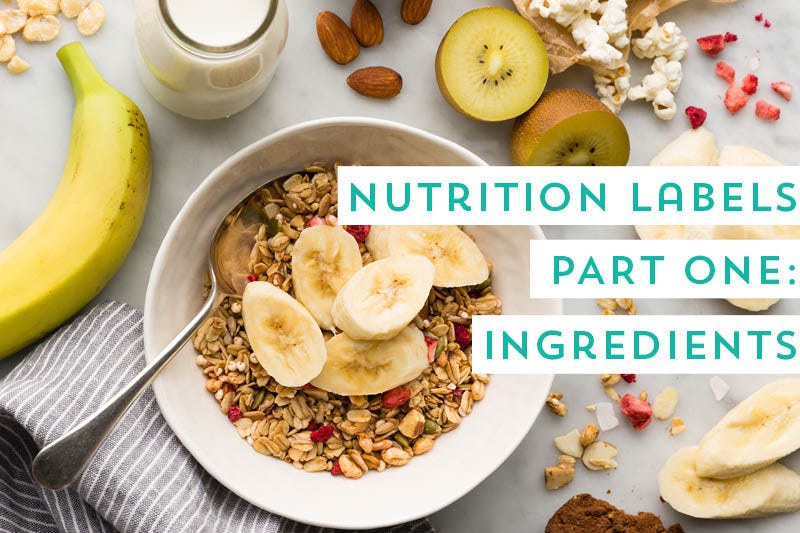
Key takeaways:
- Checking ingredients lists is just as important as looking at the nutrition panels
- Look for minimal ingredient lists, with recognisable words (not too many e numbers)
- Look for how high sugar is on the ingredient list, including words that mean sugar like glucose syrup, fructose, honey or rice malt syrup – the closer to the start of the list, the bigger percentage of the product it is
How do we know we’re picking the best option off the shelf when it comes to similar food products? The nutrition information on the back of a packaged food is there for us to read and help decide, but how do we make sense of all the small print and jargon on the back of the pack?
Nutrition labels are mostly small print and can contain some very unfamiliar words. This makes any supermarket trip a nightmare when trying to compare 5+ different brands for each food. However, it is important to know our food choices are the best fit for us and our dietary needs, and that they’re providing us with high quality nutrition.
If a big supermarket research adventure doesn’t sound like your cup of tea, consider reviewing just one or two of your commonly bought food items each trip. Start the first week with comparing a few different breakfast cereals or muesli. The following week have look at the bread products, and cheese or milk products the next.
But what should we look for on the label? A great place to start is the ingredient list.
These leading questions can give you an insight into what you’re eating:
· How many ingredients are there? Less than 5, or more than 20?
· Do you know what the ingredients listed all look like in nature, or are there a number of words like emulsifiers or flavour enhancers with numbers like e621 (this is MSG)?
· And how early in the ingredient list does sugar appear?
The number of ingredients in a product might be higher if it’s something like a muesli blend, where there are many recognisable words like nuts, seeds and whole grains. However, if the ingredient list is long, and the majority of the ingredients listed are unrecognisable to you, then this might indicate the food item has undergone a lot of processing.
When foods undergo high amounts of processing, their nutrients are typically stripped, and a number of food additives, saturated fats and sugars are added to create a ‘desirable’ product.
Highly processed foods have shown to have major health implications on humans. Our bodies haven’t been built to deal with the high load of food additives we’re presenting them with (1).
The amount of sugar we’re ingesting has hugely increased in the last few centuries, with the agricultural changes in the sugar industry. Sugar used to be a delicacy and expensive, however now it appears as a staple ingredient in a huge majority of packaged food items, namely due to the agricultural advances depleting the price of sugar.
Our body is equipped to deal with some sugars, and utilise this energy, however we want to be aware of the sugar load we are putting on our bodies. Natural sugars from fruits and vegetables are the best kind, as the soluble fibre in the fruit works as a natural buffer to release these sugar more slowly, slowing the impact of the sugar load.
On the flip-side, highly processed and refined forms of sugar such as high fructose corn syrup will do the opposite. Aim to find products where sugar is lower on the ingredient list (as the ingredients are listed in order of amount), and make sure to check for alternative names for sugar also, as some food items will contain more than one kind! (e.g. glucose syrup, fructose, rice malt syrup) (2).
Information from:
- Food Additives Pose Health Risks. Mechcatie, Elizabeth MA, BSN; Rosenberg, Karen. AJN, American Journal of Nursing: November 2018 – Volume 118 – Issue 11 – p 56 doi: 10.1097/01.NAJ.0000547666.08087.18
- http://www.glycemicindex.com/faqsList.php#4


